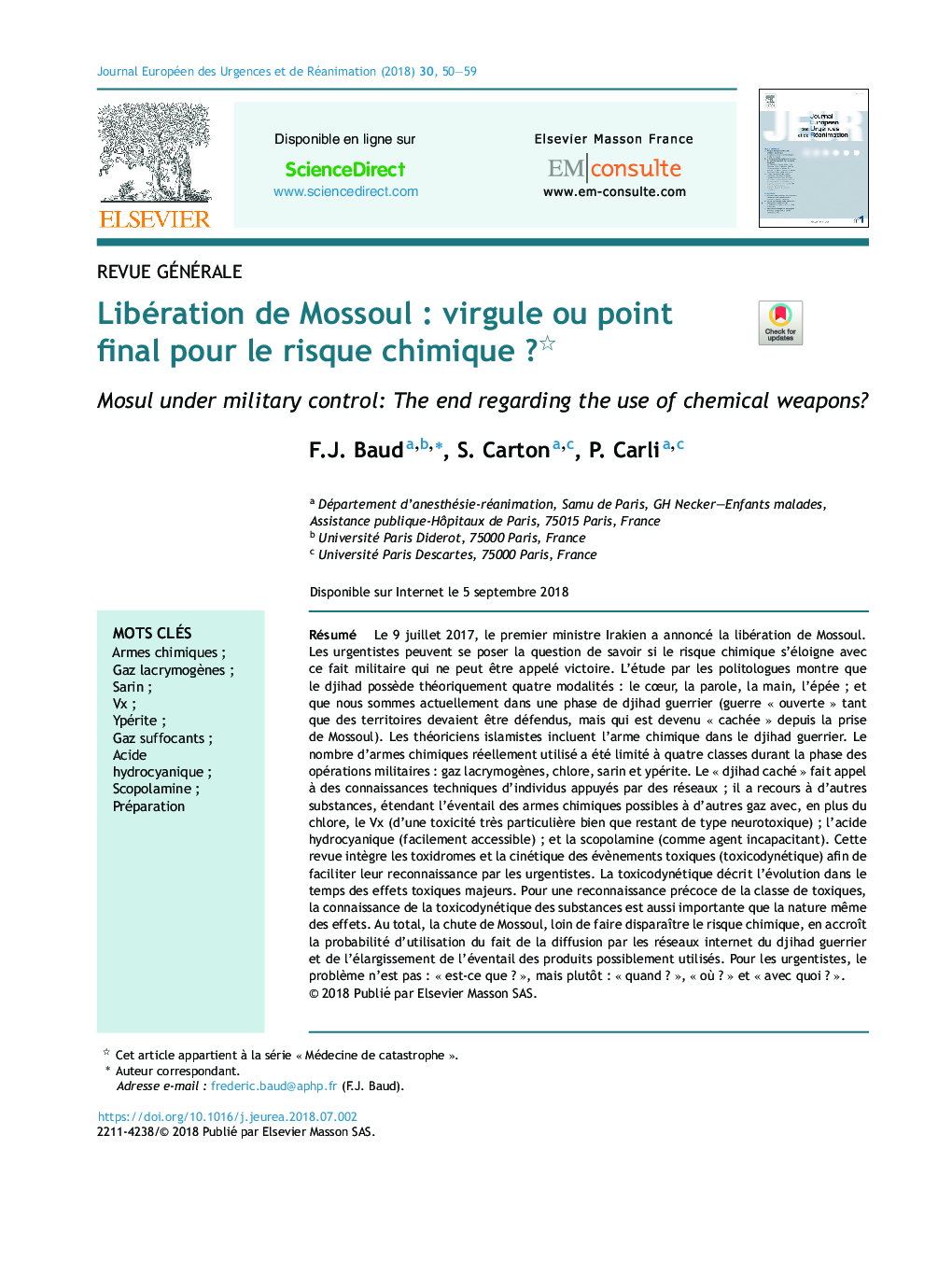| Article ID | Journal | Published Year | Pages | File Type |
|---|---|---|---|---|
| 11014557 | Journal Européen des Urgences et de Réanimation | 2018 | 10 Pages |
Abstract
The 9th of July 2017, the prime minister of Iraq informed the media that Mosul was under military control. Consequently, emergency physicians could question whether the chemical hazard is outmoded owing to what if a military fact but not a true victory. Scientists specialized in Islamism theology and actions outlined that there are four different modalities of Djihad, the worst being Warrior Djihad we are presently dealing. Warrior Djihad have had a first phase of fighting between warriors as long as land should be defended/recaptured but now being transformed into a hidden terrorism as well as battlefield in other countries. The sponsors of warrior Djihad have always included chemical weapons in the spectrum of possibly used armament. During the phase of open fighting, only four classes of chemical were used including tear gases, chlorine, sarin, and sulfur mustard. Hidden terrorism should result from individuals having knowledge in chemical weapons being helped in their action by clandestine networks. As a matter of consequence, the number of chemicals that could be used in terrorist attack should be extended to chemicals that can be easily supplied by robbery, by other states as well as buying on the net, including choking gases other than chlorine, Vx in addition to sarin, sulfur mustard, and also gaseous hydrocyanic acid and an incapacitating agent, scopolamine. The present review integrates the new toxidromes and their toxicodynetics in order to make easier emergency preparedness and intervention. Toxicodynetics describes the time-course of major toxic effects. For early recognition of the class of toxicant, the knowledge of the time-course of events is as important as the nature of toxic effects. In conclusion, Mosul control by no means results in the clearance of the chemical hazards, but conversely increases the likelihood of use facilitated by hidden network which have access to more facilities in the range of chemicals that may be used. For the emergency physician, the question is no more “should it occur?” but rather “when”, “where”, and “with which chemical”.
Keywords
Related Topics
Health Sciences
Medicine and Dentistry
Emergency Medicine
Authors
F.J. Baud, S. Carton, P. Carli,
